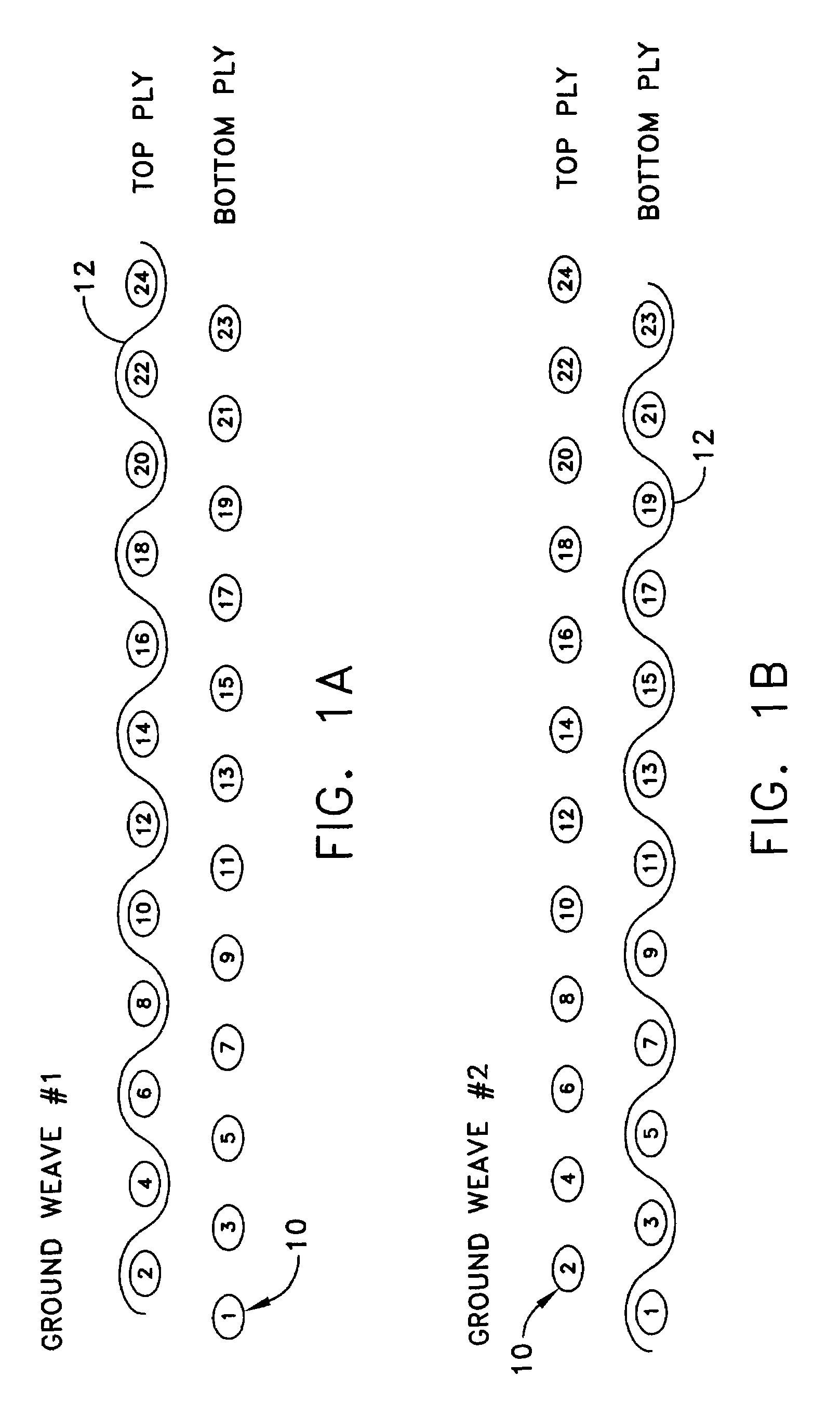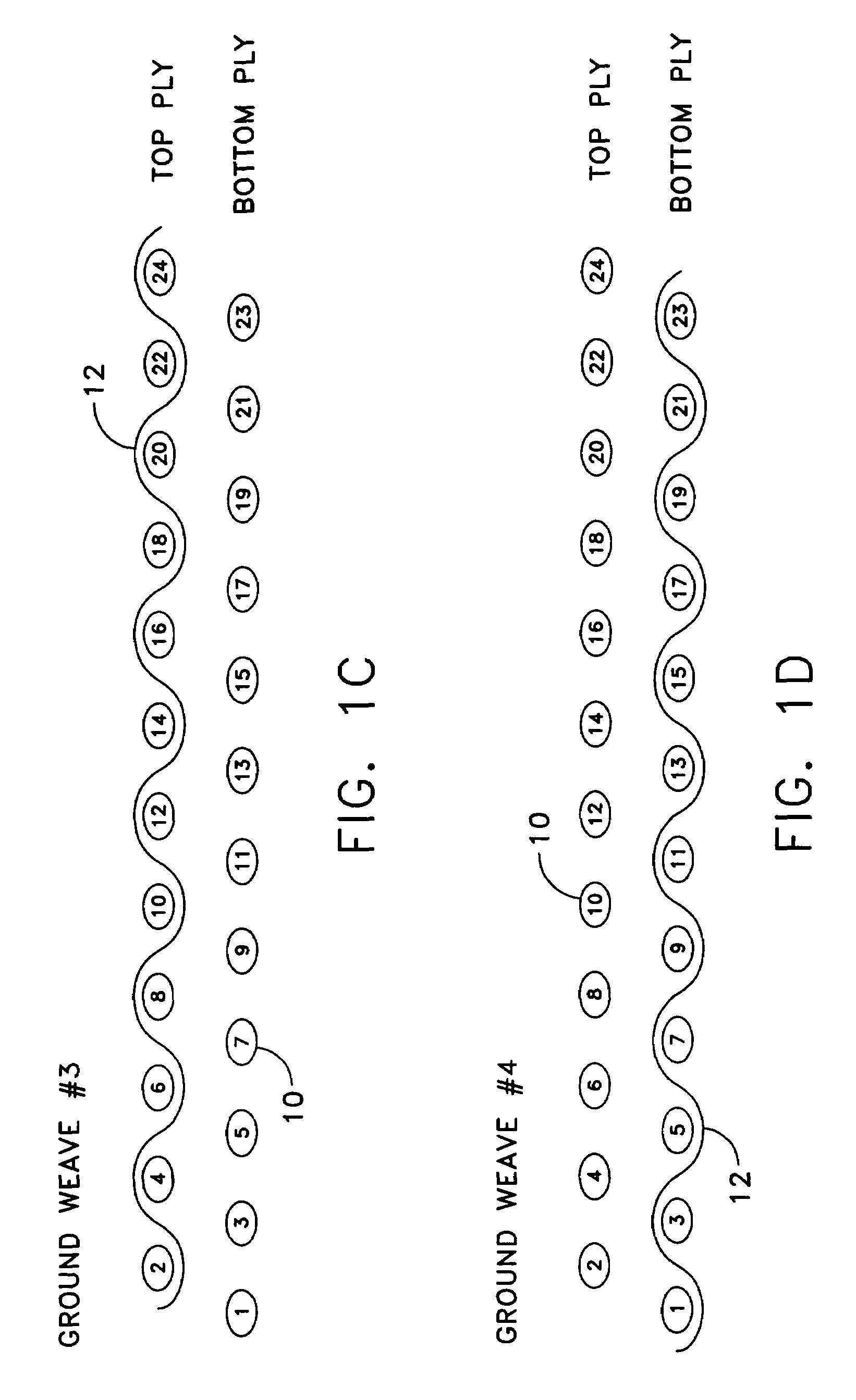Moldable webbing
a webbing and moldable technology, applied in the field of moldable webbing, can solve the problems of no narrow fabric available on the market, no such fabric available,
- Summary
- Abstract
- Description
- Claims
- Application Information
AI Technical Summary
Benefits of technology
Problems solved by technology
Method used
Image
Examples
Embodiment Construction
[0016]The fabric of the present invention is capable of retaining its shape when it is molded into virtually any shape or configuration. The fabric may be formed around an object or series of objects in order to define a particular shape. For example, the fabric may be pre-formed by hand into an “S” or “L” configuration for such applications where multiple shapes are desired. A heat cycle may be used to maintain the molded fabric into a more or less permanent form.
[0017]Narrow and other fabrics are manufactured using various weave configurations. Weave configurations used in the fabric industry are comprised of, but not limited to the following types of weaves.
3 up 1 down twill
3 up 1 down 1 up 3 down twill
Plain tubular weave
2 up 2 down tubular weave
3 up 1 down tubular weave
5 up 1 down 1 up 5 down with or without binder yarns
7 up 1 down 1 up 7 down with or without binder yarns
Double plain weave with 1 up 1 down binder sequence
Double plain weave with 2 up 2 down binder sequ...
PUM
| Property | Measurement | Unit |
|---|---|---|
| diameter | aaaaa | aaaaa |
| width | aaaaa | aaaaa |
| width | aaaaa | aaaaa |
Abstract
Description
Claims
Application Information
 Login to View More
Login to View More - R&D
- Intellectual Property
- Life Sciences
- Materials
- Tech Scout
- Unparalleled Data Quality
- Higher Quality Content
- 60% Fewer Hallucinations
Browse by: Latest US Patents, China's latest patents, Technical Efficacy Thesaurus, Application Domain, Technology Topic, Popular Technical Reports.
© 2025 PatSnap. All rights reserved.Legal|Privacy policy|Modern Slavery Act Transparency Statement|Sitemap|About US| Contact US: help@patsnap.com



